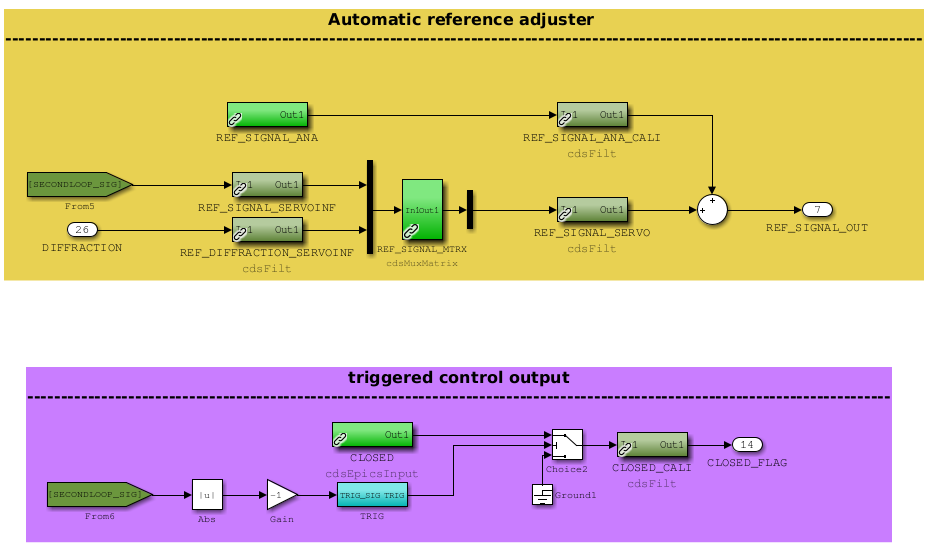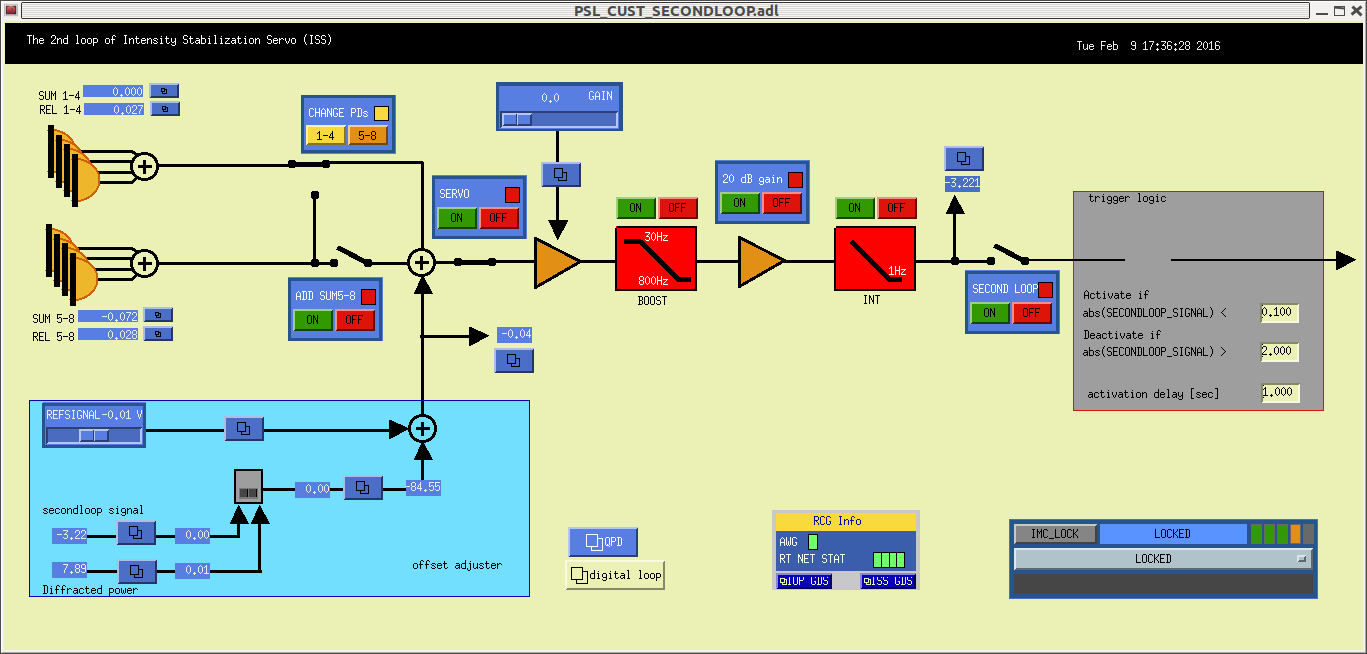Under WP #5710
I applied another modification on the PSL ISS front end model as planned in alog 25316.
I tested the automatic engagement and adjusted the parameters so that it locks smoothly. The IMC_LOCK guardian code is updated to incorporate this new automation and has been tested multiple times.
I have not tested the engagement as part of the full locking sequence.
[The change in the h1psliss model]
As shown in the above attached screenshot, I added two functions last time (see alog 25316). Today, I have refined the automatic reference adjuster a bit by placing signal conditioning filters and etc. The above screenshot shows the final configuration I have implemented.
The concept is that when the second loop is open we set the reference coarsely using the manual slider (i.e. REF_SIGNAL_ANA). Then a fine tuning is done by feeding SECONDLOOP_SIGNAL (shown as a green tag) to the reference point. This will let the second loop operating point close enough to close the loop. Once the loop is closed, one can then optimize the diffraction power at the AOM by feeding the diffracted power back to the reference of the second loop. This choice can be done by a mtrix.
[The screen]
The latest screen now looks like this.

















